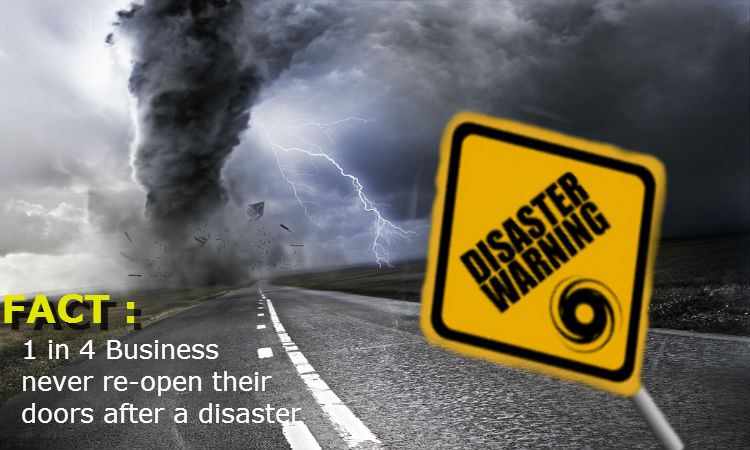Is your mission-critical information located in a Data Center Servers or do you manage it within your own environment?
A disaster, man-made or natural, can leave an organization entirely helpless, unless you have a disaster recovery plan on place. You never know when the worst would happen, but you can at least prepare ahead to avoid unwanted consequences.
Here are few facts and statistics that you need to know:
- Around 25% of organizations are unable to pull their business back on track after a major occurrence.
- According to Carbonite, 70% of businesses experience data loss due to accidental deletion of data, system failure, technical error, malware, fire or such other issue.
- In the event of data loss, employees attempt to recover the lost files by applying their own strategies such as using recovery software, unplugging computer, restarting, and such steps can aggravate the condition and cause permanent data loss.
- Nearly 40% of organizations have a poorly managed DR plan.
- Most organizations do not apply for DR plan because they can’t afford it.
What can you do?
You can either outsource your needs, or host an in-house DR site. Maintaining an in-house DR site is not easy, besides, it adds to your expenses, as there’s a huge investment involved. Outsourcing can be comparatively a great idea because the service provider manages everything.
Below are some steps that organizations must consider to disaster proof their data:
- The first step is obvious, plan. Plan what you need, how you need, how it can be done, how advantageous it is, what data you need to recover and so on. Make sure to set a priority, don’t treat all data equally.
- Create copies of your file and store it on a third-party server. So if your primary node fails, you can still recover your data maintained at a remote location.
- Don’t forget to test your DR plan. Testing and examining will help you determine whether the plan is functioning appropriately or not. Also, consider the mechanics of the recovery plan, which is the size of your files. If the files are too big and take more time to recover, then purchase increased bandwidth.
Company’s responsiveness to disaster reflects the efficiency of an organization. Even a minute of downtime can lead to massive revenue loss. But revenue loss is just the first reaction of the accident; eventually, you’ll lose customer trust, which is hard to regain. A full-fledged disaster recovery services plan could save you from the worst nightma

